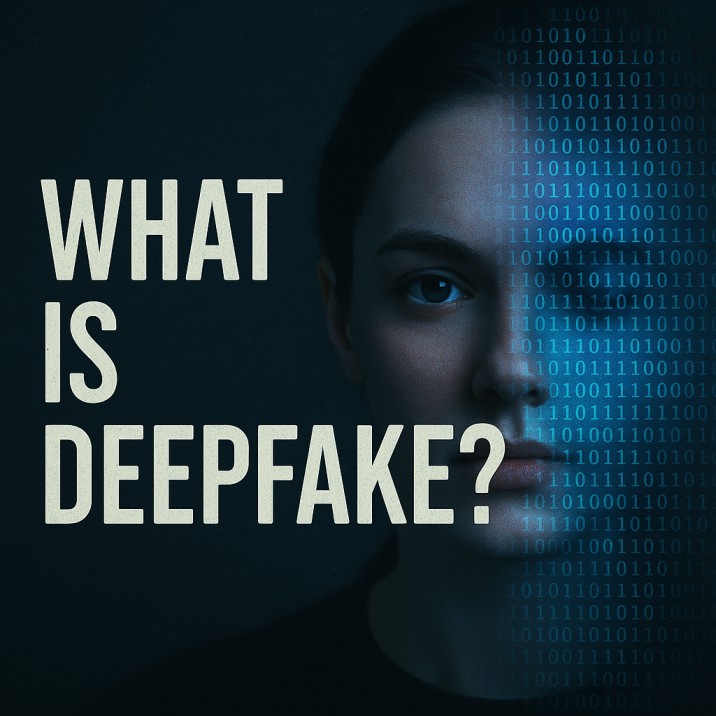What is Deepfake? The Complete Guide to AI-Generated Fake Media
Deepfake technology is revolutionizing how we create and consume media, but it also poses serious risks. Learn what deepfakes are, how they work, and how to protect yourself from AI-generated deception.
What is Deepfake?
A deepfake is synthetic media (video, image, or audio) created using artificial intelligence (AI) to manipulate or replace a person's likeness and voice with someone else's. The term combines "deep learning" (a type of AI) with "fake."
Deepfakes can make it seem like someone said or did something they never actually did. While some are used for entertainment (like face-swapping in movies), others spread misinformation, enable fraud, or damage reputations.

Deepfake technology can seamlessly swap faces and voices in videos
How Do Deepfakes Work?
Deepfakes rely on advanced AI algorithms:
1. Generative Adversarial Networks (GANs)
Two AI models compete:
- Generator: Creates fake content
- Discriminator: Tries to detect if it's fake
Over time, the generator improves until the fake is nearly indistinguishable from reality.
2. Autoencoders
Analyze facial expressions and movements to map one person's face onto another's.
3. Neural Networks
Used for voice cloning, lip-syncing, and full-body deepfakes.
Common Deepfake Techniques
- Face Swapping: Replacing a person's face in a video
- Voice Cloning: Mimicking someone's speech patterns
- Lip Syncing: Matching fake audio to video
Think You've Found a Deepfake?
Use our advanced AI detection tools to verify suspicious media:
Detect Deepfake Audio Now Detect Deepfake Image NowAre Deepfakes Dangerous?
While deepfakes have legitimate uses (like film dubbing), they pose serious risks:
Misinformation & Fake News
Fake videos of politicians can manipulate public opinion.
Fraud & Scams
Criminals use deepfake voices in CEO fraud attacks.
Revenge Porn
Non-consensual deepfake pornography is growing.
Identity Theft
Deepfakes can bypass facial recognition security.
Real-World Deepfake Examples
- A finance worker transferred $25 million after a deepfake video call with a fake CFO
- A fake Volodymyr Zelensky video urged Ukrainians to surrender
- Scammers cloned a CEO's voice to steal $243,000
How to Spot a Deepfake
As AI improves, deepfakes get harder to detect—but look for these signs:
Video & Image Deepfake Signs
- Unnatural blinking or facial movements
- Blurred edges around face or hair
- Inconsistent lighting & shadows
- Mismatched lip movements with audio
- Too-perfect skin texture (no pores)
Audio Deepfake Signs
- Robotic or unnatural tone
- Unusual pauses or breathing
- Background noise doesn't match
How to Protect Yourself
- Verify suspicious media - Check multiple sources
- Use detection tools - Like DeepfakeDetector.ai
- Enable 2FA - Prevent voice scams
- Stay informed - Follow cybersecurity updates
Are Deepfakes Illegal?
Laws vary by country:
- 40+ U.S. states ban non-consensual deepfake porn
- The EU's AI Act regulates deepfake transparency
- India & UK are drafting anti-deepfake laws
Most deepfakes remain legal unless used for fraud, defamation, or harassment.
Don't Risk Falling for Deepfakes
Verify suspicious content with our advanced detection system:
Test for Deepfakes NowFAQs About Deepfakes
Final Thought: Stay Vigilant
Deepfake technology is advancing fast—both in creation and detection. While AI-generated media can be fun or useful, it also poses serious ethical and security risks. The best defense? Stay skeptical, verify content, and use AI detection tools.